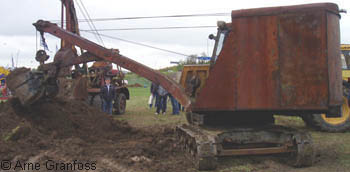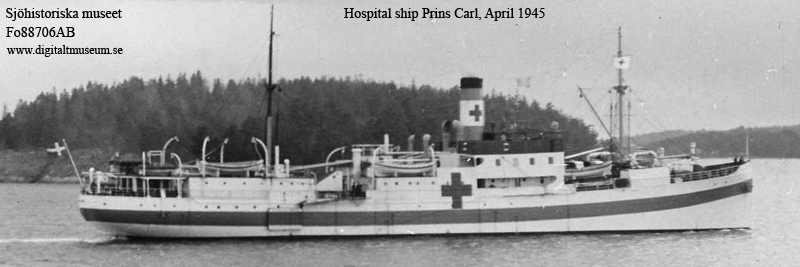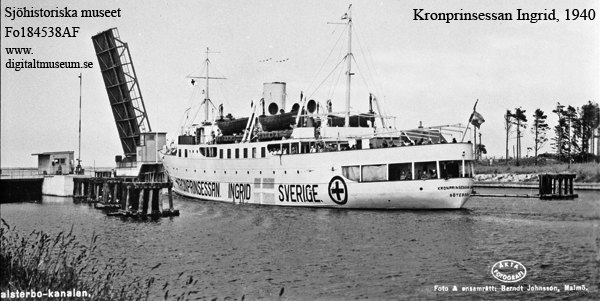Sweden after the war

 UNDER CONSTRUCTION Version 0.4
UNDER CONSTRUCTION Version 0.4
|
Sweden in World War II - across borders
|
 |
![]()
![]()
Even though Sweden had declared itself neutral and had not been occupied or attacked, but for comparably small incidents, all Swedes had been
affected by more than five years of war in all countries around Sweden. Partly fear of enemy attacks, partly emotional concern for family members in the merchant fleet and in military service
and similar, partly emotional concern for family members and friends in other countries at war, and also by the many changes in the daily life.
![]()
Already in January 1945 a parliamentary committee began to investigate the Swedish refugee issues and security service. The report listed several cases during the early years of the period where refugees had been denied entry to Sweden, but the committee thought that there had been reasons to receive the persons as refugees. It also said that the shift in Swedish refugee policy in the autumn of 1941 was considered to have taken place too late. [s60]
![]()
Sweden had kept out of the war, and remained neutral with diplomatic relations with all parties. On 7 May 1945, the day Germany capitulated, the German minister in Stockholm was informed that German-Swedish diplomatic relations had ceased. [s58]
![]()
On 9 May 1945 Soviet Union troops landed on the Danish island Bornholm, and declared to the Danish authorities on the island that they only would stay there until the German troops left. The Germans had left after four days, while the Soviet Union left after more than ten months. [s58]
Bornholm is situated south of Sweden, and closer to Sweden than to the rest of Denmark.
![]()
Among the Swedish soldiers killed during World War II were 500 accidental deaths during military service in Sweden. [s06]
Sweden had lost at least 2282 persons during the war, 782 were military personnel and more than 1500 civilian sailors. There were also almost 15000 soldiers with various disabilities and numbers of sailors and workers with serious injuries caused by war activities. [s50]
![]()
460 Swedish sailors were killed on Swedish ships while outside the German zone between Denmark and Norway, and some 600 were killed while sailing on ships from other nations. 270 Swedish ships were sunk during World War II, 84 of them on the Atlantic Ocean. 203 Swedes were killed and 66 ships sunk while they freighted Swedish iron ore during the war. [s50]
There are different numbers. One source mention 1886 killed Swedish sailors, but the author later have said that it probably was closer to 1950 sailors. [s50]
![]()

On 30 June 1945 the Swedish Navy's hospital ship S/S Prins Carl arrived to Kalmar in southeastern Sweden. She and four other Swedish ships sailed between Lübeck in Germany and Sweden with former prisoners in German concentration camps. 10.000 got medical treatment in Sweden. [s50]
It was the United Nations Relief and Rehabilitation Administration who asked Sweden to receive 10,000 former concentration camp prisoners, foremost from the camp Bergen-Belsen, for six months. It took about three weeks to prepare ships, staff, et cetera. The following four weeks the ships brought some 250 persons to Sweden per voyage, with most of the patients in beds. A few dozen were in such a bad condition that they died during the transport from the temporary British camps, and around 100 died in Swedish medical care. Around 1,000 of the survivors became Swedish citizens. [s67]
The preparations of the four ships (two of them cargo ships) included beds, medical equipment, provisions, crew and medical staff that should be vaccinated, painting of the ships with Red Cross identification, et cetera. Also, the Swedish Red Cross set up a temporary detachment in Lübeck, with among others 1400 beds and a staff of more than 560 persons (mostly Germans). [s74]
The first ship left Sweden on 22 June with minesweeper escort, and the four other ships left the following day with three German minesweepers. In Lübeck the ships were fitted with a German 'anti-mine' equipment, and after the second journey there were no minesweepers escorting the ships southwards. The operation is completed on 26 July. Around 9,400 persons of 20 different nationalities, most of them women, had been transported to Sweden for medical care. [s74]
Kronprinsessan Ingrid was one of the ships. Before the war she was in traffic as a passenger and car ferry between Gothenburg and Fredrikshavn, Denmark. She had been out of traffic since 1940. [s74] (So the year of the photo below seems to be wrong - and the channel Falsterbokanalen on the photo was constructed 1940-1941).

![]()
On 2 June 1945 the Soviet Union sent a note to the Swedish government regarding the agreement the conquering nations had made at the time of the German capitulation. The Swedish government took the decision to follow the Allies agreement on 15 June. War prisoners and internees were to be sent to the country, who now had occupied the area where the soldier had been fighting at the end of the war. Most of the internees in Sweden, who had fought for Germany, would be sent to the Soviet Union. The decision was kept a secret, and plans for the transports were made. [s52]
These internees regarded themselves as refugees, who would be sent to their home towns according to international regulations. The summer passed and neither internees nor camp leaders had received any information. Then things began to happen. In the newspapers the internees could read, some articles were cut out. No more visitors to the camps, reinforced guard, rumours, ... The debate in Sweden was intense. [s52]
In the Backamo camp with around 1,200 men, the decision was read to the internees on 24 November 1945. Less than a week before the extradition should take place. [s52]
Several of the internees mutilated themselves or others, in hope that this would stop their extradition to the Soviet Union. Some commited suicide, others hunger-struck, and about a dozen tried to hide in the camp (among others in walls and under floors). [s52]
Most of the former German soldiers were sent to the Soviet Union, since they at the end of the war had fought on land that had become occupied by the Soviet Union. [s52]
All of them left Sweden around the end of November and early December 1945, between wooden walls or barbed wire and guarded by armed Swedish military. [s52]
When the Germans who were sent to be British war prisoners arrived in Neustadt, the British took care of the food that the Swedes had given the prisoners. [s52]
At least one of the Germans went back to Sweden after some years. [s52]
![]()
At the most there were 180.000 refugees in Sweden, more than half of them from Finland. That was at the turn of the year 1944/1945. After the end of the war, refugees from Estonia was the second largest group and from Poland the third largest group. [s55]
In December 1944 there were over 193,000 refugees in Sweden, of which more than 80,000 came from Finland. In May 1945 there were 18,000 Danes and more than 43,000 Norwegians. Some 50,000 Norwegians had fled to Sweden during the years of war. [s58]
Around 5.000 of the 11.000 jewish refugees stayed in Sweden. A minority of the refugees from Poland went back to Poland. [s55]
![]()
For some time after the war Sweden gave aid to Nordic countries, mainly food and interest-free credits and loans. [s58]
![]()
In late December 1945 a Swedish aid expedition arrived in Hamburg. [s49]
![]()
Around 90 Swedish sailors were killed during the years after the end of the war, foremost when remaining mines exploded. [s65]
![]()
153 refugees from the Baltic region, who had arrived to Sweden in German uniforms, were handed over to the Soviet Union in 1946.
There had been hunger strikes and self-mutilation, and lots of discussions in Sweden.
227 Germans were also handed over to the Soviet Union. [s06]
![]()
The Swedish defence staff contacted around 10 former volunteers in the German SS in 1946-1947. The idea was to form a stay-behind structure with former volunteers who fought for Finland and in SS. (Similar activities took place in other countries.) [s50]
![]()
Denmark and Norway joined NATO, after unsuccessful discussions with Sweden to form a Scandinavian defence association. [s06]
![]()
2015-08-29. www.granfoss.se. Text/pictures: Arne Granfoss